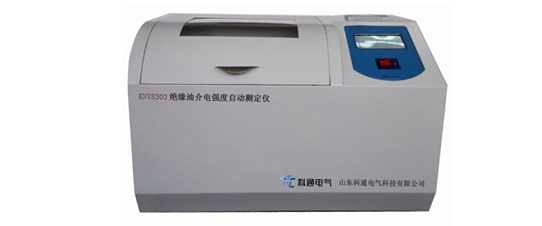Characteristics of dielectric strength tester for insulating oil
Characteristics of dielectric strength tester for insulating oil

Instrument characteristics
◆ with microcomputer control, three samples can be detected continuously, and printing results can be calculated automatically
◆ adopt digital method to adjust the voltage, with uniform and stable boosting speed. It avoids the influence of the sliding contact and the mechanical transmission part of the traditional voltage regulator on the test results
◆ built in function generator and sine wave automatic generation device, small power frequency sine wave distortion rate and stable frequency, avoiding the influence of power grid harmonic on test when directly using power grid as booster power supply, making test voltage more stable and reliable
◆ wide range watchdog circuit is set inside to eliminate the crash, with over-current, over-voltage, short-circuit protection and other functions, as well as strong anti-interference ability and good electromagnetic compatibility
The instrument program has two national standard test methods (1986 and 2002) and user-defined settings, which can adapt to various choices of different users
◆ the oil cup of the instrument adopts composite material for one-time pouring to eliminate oil leakage and fragile phenomenon, and has the function of adjusting electrode spacing with vernier caliper, which is convenient for use
◆ the power supply voltage range of the instrument is wide, and it works normally within AC220V ± 20%
◆ desktop structure, easy to operate, indoor and outdoor use
Technical performance
◆ applicable standard: GB / t507 dl429.9 (1986 and 2002 two national standard test methods are optional)
◆ output voltage: 0-80kv (optional)
◆ minimum resolution: 0.1kv
◆ measurement accuracy: ± (2% × reading + 0.2kv)
◆ step up speed: 2.0kv/s, 2.5kv/s, 3.0kv/s, 3.5kv/s optional
◆ breakdown and cut-off time: ≤ 1ms
◆ test times: 6 times (1-6 times optional)
◆ oil cup capacity 400ml, 200ml (optional)
◆ electrode spacing 2.5mm (adjustable electrode gap)
◆ working environment:
Ambient temperature: 0 ℃ ~ 40 ℃ relative humidity: ≤ 80% RH, no condensation
Power supply voltage: AC 220V ± 10%
Power frequency: 50Hz ± 1Hz
On a Industry news:Function of dielectric loss tester
The next Industry news:What should I pay attention to during the use of the insulation oil voltage tester



